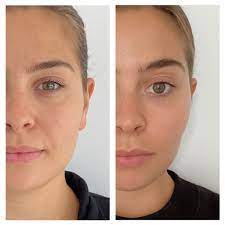
Bruxism, a condition characterized by the grinding or clenching of teeth, can lead to a range of issues from dental damage to jaw pain. Traditionally managed through dental guards and stress management techniques, an innovative approach has emerged: Botox. This article delves into treating bruxism for Botox in Dubai, exploring what you should know before considering this treatment.
What is Bruxism?
Bruxism involves involuntary grinding or clenching of the teeth, often occurring during sleep but sometimes manifesting during waking hours. The condition can lead to various symptoms, including:
- Jaw Pain: Persistent discomfort or pain in the jaw muscles.
- Dental Damage: Wear and tear on the teeth, including fractures and erosion.
- Headaches: Tension headaches or migraines due to muscle strain.
- TMJ Disorders: Issues with the temporomandibular joint, which connects the jawbone to the skull.
Traditional Treatments for Bruxism
Before exploring Botox as a treatment option, it’s essential to understand conventional approaches:
- Mouth Guards: Custom-fitted dental appliances that protect teeth from damage.
- Stress Management: Techniques such as meditation, exercise, or counseling to address underlying stress contributing to bruxism.
- Behavioral Therapy: Cognitive behavioral therapy (CBT) to manage subconscious grinding or clenching.
What is Botox?
Botox, or botulinum toxin, is a neurotoxin that temporarily paralyzes muscles by blocking nerve signals. While commonly associated with cosmetic treatments to reduce wrinkles, Botox has gained recognition for its medical applications, including treating bruxism.
How Botox Treats Bruxism
Botox treatment for bruxism involves injecting small amounts of the toxin into the muscles responsible for jaw movement, particularly the masseter muscles (the primary muscles used for chewing). Here’s how Botox helps:
- Muscle Relaxation: Botox temporarily weakens the masseter muscles, reducing their activity. This can alleviate the grinding and clenching associated with bruxism.
- Pain Relief: By reducing muscle tension, Botox can help alleviate pain in the jaw and associated areas, such as the temples and neck.
- Prevention of Dental Damage: With reduced muscle activity, there is less force exerted on the teeth, which helps prevent further dental damage.
Benefits of Botox for Bruxism
- Effective Muscle Relaxation: Botox provides targeted relief by specifically addressing the muscles involved in bruxism.
- Non-Surgical Solution: It offers a non-invasive alternative to surgical options for managing severe bruxism.
- Quick Procedure: The injection process is relatively quick, often completed within a few minutes, and requires minimal downtime.
- Long-Lasting Results: Botox effects can last between 3 to 6 months, providing extended relief from bruxism symptoms.
Considerations and Risks
While Botox offers promising benefits, there are important considerations and potential risks:
- Temporary Effects: The effects of Botox are temporary, requiring repeat treatments to maintain results.
- Possible Side Effects: Some individuals may experience mild side effects, such as bruising at the injection site, headache, or temporary difficulty with chewing.
- Limited Coverage: Not all insurance plans may cover Botox for bruxism, so it’s crucial to check with your provider.
- Specialist Expertise: Ensure that the procedure is performed by a qualified professional with experience in treating bruxism to minimize risks.
The Botox Treatment Process
- Consultation: Begin with a consultation with a healthcare provider or specialist to discuss your symptoms, medical history, and suitability for Botox treatment.
- Assessment: The specialist will assess the severity of your bruxism and determine the appropriate dosage and injection sites.
- Injection: Botox is administered through small injections into the masseter muscles. The procedure is relatively quick, with minimal discomfort.
- Post-Treatment Care: After the injections, you may experience mild soreness or swelling, which typically resolves within a few days. Follow any post-treatment instructions provided by your specialist.
Alternative and Complementary Treatments
Botox is not the only option for managing bruxism. Depending on your condition, a combination of treatments may be recommended:
- Dental Appliances: Custom night guards can protect your teeth and work alongside Botox for comprehensive management.
- Physical Therapy: Exercises and therapy to strengthen and relax jaw muscles may complement Botox treatment.
- Lifestyle Changes: Addressing stress and adopting relaxation techniques can enhance the effectiveness of Botox and other treatments.
Finding the Right Specialist
Choosing the right provider for Botox treatment is crucial for achieving optimal results. Look for:
- Qualified Professionals: Ensure that the specialist is certified and experienced in administering Botox for bruxism.
- Reputable Clinics: Opt for clinics with a track record of successful treatments and positive patient reviews.
- Consultation: Schedule a consultation to discuss your concerns, treatment plan, and expected outcomes.
Conclusion
Botox presents a viable option for treating bruxism, offering relief from muscle pain, dental damage, and associated symptoms. While it provides significant benefits, it is essential to weigh the considerations and consult with a qualified specialist. By combining Botox with other treatments and lifestyle adjustments, you can effectively manage bruxism and improve your overall quality of life. If you’re struggling with bruxism, exploring Botox treatment may be a worthwhile step towards achieving relief and restoring your comfort.